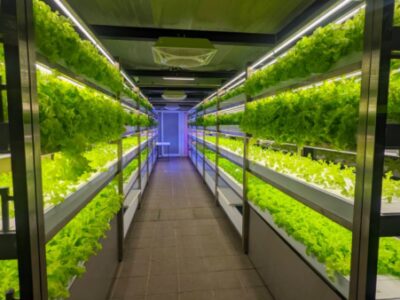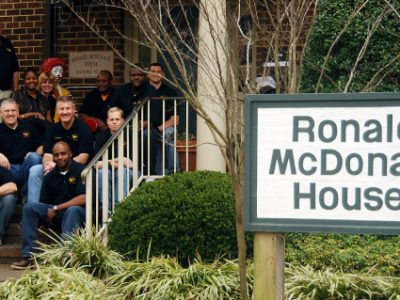
Whenever we think of hydrogen and aircraft, one thing comes to mind: the Hindenburg. The the largest rigid airship ever constructed that exploded in 1937 over New Jersey.
Now, eight decades later, some scientists are saying to give hydrogen another chance. After all, it’s one of the most abundant fuel sources on the planet.
New Scientist writes, “Hydrogen is the lightest element in the universe and the most abundant, so on paper, hydrogen fuel has a lot going for it. Although it rarely exists on its own on Earth, it can be produced using clean energy to split essentially inexhaustible water molecules, producing only oxygen as a by-product.
However, 96 per cent of hydrogen today is made directly from fossil fuels – mostly natural gas, followed by coal and then oil. This overwhelmingly uses a process known as steam reformation that releases carbon dioxide.
Humanity produces around 70 million tonnes of hydrogen each year, mainly for use in making ammonia fertilizer and chemicals such as methanol, and to remove impurities during oil refining. Proponents of using hydrogen as a clean fuel think it could soon also play a vital role in decarbonising other sectors, including lorries, aviation, and heavy industry.
Hydrogen acts as a chemical energy carrier, rather like oil or gas, that can be piped or transported to where it is needed. It stores three times as much energy per unit of mass as conventional petrol, and when it “burns” in air – releasing that stored energy – it simply combines with oxygen to produce water again.”
While there’s a popular focus on using hydrogen fuel for cars, the FAA just announced some big news for the air. The agency “has granted California-based company Universal Hydrogen approval to move forward with a first flight of its hydrogen-powered Dash 8-300 test airplane at Grant County International Airport in Moses Lake,” wrote KOMO News.
The FAA gave the go-ahead through a special airworthiness certificate in the experimental category following successful first taxi tests of the aircraft. Those tests are designed to evaluate ground handling qualities and the performance of the fuel-cell powertrain at low power settings and airspeeds.”
Universal Hydrogen statement said: today announced it was granted a special airworthiness certificate in the experimental category by the Federal Aviation Administration (FAA) to proceed with the first flight of its hydrogen-powered regional aircraft. The company also released video footage of successful first taxi tests of the aircraft, designed to evaluate ground handling qualities and the performance of the fuel-cell electric powertrain at low power settings and airspeeds.
The Dash 8-300 flying testbed has a megawatt-class hydrogen fuel cell powertrain installed in one of its nacelles. The powertrain is in a configuration that closely resembles the company’s first product—a conversion kit for ATR 72-600 regional airliners—which is expected to be certified and in commercial passenger service starting in 2025. Notably, Universal Hydrogen’s powertrain does not utilize a hybrid battery architecture—a major innovation—with all of the power transmitted directly from the fuel cells to the electric motor, significantly decreasing weight and lifecycle cost.
The FAA approval clears the way for the first flight of the Dash 8-300 flying testbed which will take place at Grant County International Airport in Moses Lake, Washington. The aircraft will be by far the largest hydrogen fuel cell-powered airplane to take to the skies, and second as a hydrogen-powered aircraft only to the Soviet flight test in 1988 of a Tupolev Tu-155 airliner with one of its jet engines converted to burn hydrogen.
Universal Hydrogen unveiled in December 2022 first operational tests of its modular hydrogen delivery system at its engineering center in Toulouse, France. Those tests demonstrated a pragmatic, near-term, and highly scalable approach to hydrogen delivery to airports and into the aircraft using a modular capsule technology. This eliminates the need for costly new infrastructure, with any airport capable of handling cargo being hydrogen-ready. It also eliminates transfer losses and significantly speeds up hydrogen fueling operations—both significant pain points for the zero-emissions fuel.
“We are simultaneously providing a pragmatic, near-term solution for hydrogen infrastructure and delivery, as well as for converting existing passenger aircraft to use this lightweight, safe, and true-zero-emissions fuel,” said Paul Eremenko, co-founder and CEO of Universal Hydrogen. “Today’s milestones are essential, important steps to putting the industry on a trajectory to meet Paris Agreement obligations. The only alternative is curtailing aviation traffic growth to curb emissions.”
Finding new ways to power airplanes has been a key focus for innovators, especially at NASA, of course. In October, the space agency announced a remarkable breakthrough in battery technology that will likely propel the airplanes of the future.
NASA has been working on electric jets for over five years. The Robb Report explained, “America’s favorite agency is hard at work on developing a quiet supersonic jet and electric aircraft as part of its “X-planes” series. NASA’s X-57 “Maxwell” and X-59 QueSST supersonic jet are moving closer to their first test flights after completing ground tests.
The space agency’s X-planes were launched in 1944 to pursue research into high-speed aircraft. The series has achieved many aviation firsts, including breaking speed and altitude barriers, using new materials and propulsion systems, as well as developing hypersonic aircraft.
The X-57 program was started in 2016 as part of NASA’s Scalable Convergent Electric Propulsion Technology Operations Research Project (SCEPTOR). The acronym essentially stands for developing low-emissions aircraft powered by electric motors. The ‘Maxwell,’ an Italian Tecnam P2006T, was converted last year into an electric aircraft by replacing its conventional Rotax engines with two electric motors made by Joby Aviation.”
[Read More: Archeologists Prove Disco Bar Is Actually 14th Century Place of Worship]










Expand H2 fuel use today vs then 1937
Cleaner burning